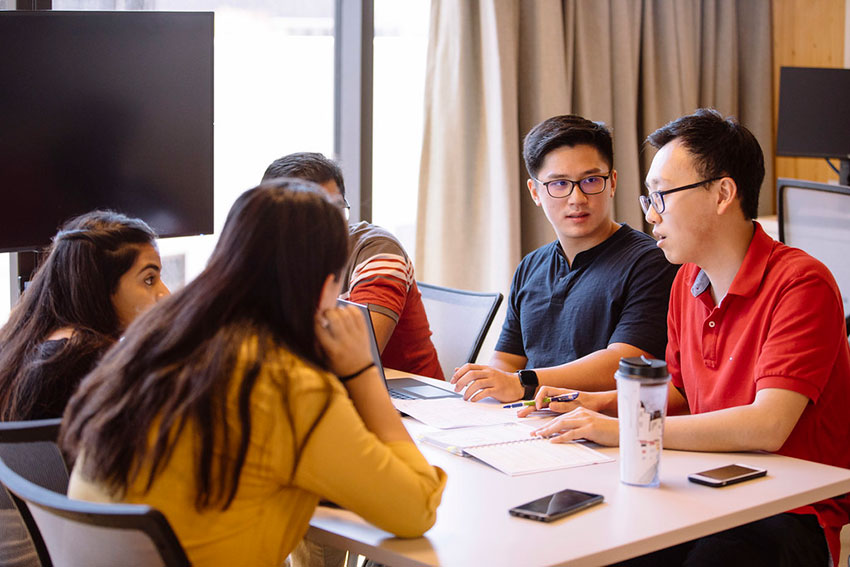There are many reasons why we use group work at university. One major reason is to provide students with experience working and communicating in teams as this is a highly valued graduate attribute. (Oliver and Jorre de St Jorre, 2018). But, as educators we do little to teach students how to work effectively in groups, instead expecting them to develop teamwork skills through repeated exposure.
Group work can be a valuable and enjoyable learning experience for students, but it comes with many challenges. When group work is part of the assessment, a significant challenge is how to fairly access the contribution of individuals within a group and assign each student an appropriate grade. A great deal of the student dissatisfaction with group work revolves around the even distribution of work and fairness of grades (Burdett, 2003). Students like to feel that their efforts have been recognised and that free riders or passengers are appropriately penalised (Davies, 2009) (Burdett, 2003).
Peer assessment processes or evaluation of team member contribution (TMC) can be used to make small adjustments to team grades in order to attribute fair marks for individual effort. These processes are often completed at the end of a project by way of team consensus or student surveys. When completed only at the conclusion of a project, students can focus on attributing blame for poor performance, dominant team members can try to control the outcome in their favour or students can attempt to ‘school’ the system in order to achieve additional grades. Without reflection on the experience, these processes do little to develop students’ teamwork skills from one group project to the next.
In order to encourage the development of professional skills relating to teamwork, the TMC process can be reframed as an opportunity to reflect and improve teamwork skills throughout the life of a group project. This can be achieved by incorporating a TMC evaluation at multiple points through a project rather than just at the completion. Evaluation can be framed as considering the effort of each team member versus the expectations that the team determined during initial team formation. Students can also self-evaluate (although self-evaluation should be mute in any grade adjustments).
A number of tools are available to complete peer assessment including SPARKPLUS and a Moodle database activity under development at the ANU (VirtuousLoop). This system has been trialled in several Engineering undergraduate projects. Data is collected by surveying the students at multiple points throughout the project (two to three times with the final survey at the completion of the project). Students rank the contribution of all team members and themselves against a Likert scale (well above expectations, above expectations, at expectations, below expectations, well below expectations, absent). In an ideal situation, all team members will be rated at expectations. Students also provide anonymous comments on the teamwork to date and a confidential comment for the teaching team.
The results are collated to develop a report that quickly highlights team members who are contributing above or below the expectations of the team. Both the evaluations and comments can help the teaching team highlight situations that are not going well and the reasons why, also providing a scale for possible adjustments to grades.

The graph is the output of the student reviews. It provides the anonymous rankings given to each student by their team members (yellow showing the average). In this situation you can see that the first and second students were clearly ranked as contributing well above the expected contributions for the team. The third student was below expectations but not by a significant amount.
Once the results are generated the team looks at the results, reflecting on which actions have worked well within the project and should be carried forward (possibly into future projects), and discusses actions that are not working well, brainstorming possible solutions. This can take place entirely within the team or with the guidance of a tutor. Self-assessment and open team discussions encourage the students to understand that their own actions within the team have influence. The ongoing process allows student who are performing below expectations an opportunity to improve and redeem themselves. This process provides a scaffold for continuous improvement of teamwork skills throughout the degree program and into their future professional careers.
Burdett, J. 2003 Making Groups Work: University Students’ Perceptions, International Education Journal, 4(3) p177-191
Davies, W. M. (2009). Groupwork as a form of assessment: Common problems and recommended solutions. Higher Education, 58(4), 563-584. doi:http://dx.doi.org.virtual.anu.edu.au/10.1007/s10734-009-9216-y
Beverly Oliver & Trina Jorre de St Jorre (2018) Graduate attributes for 2020 and beyond: recommendations for Australian higher education providers, Higher Education Research & Development, 37:4, 821-836 DOI: 10.1080/07294360.2018 14464515
August 2020
Jenny Simmons is a lecturer in engineering at the ANU College of Engineering & Computer Science, and was also an Interactive Learning fellow in the Interactive Learning Project (iLEAP) until June 2020.

